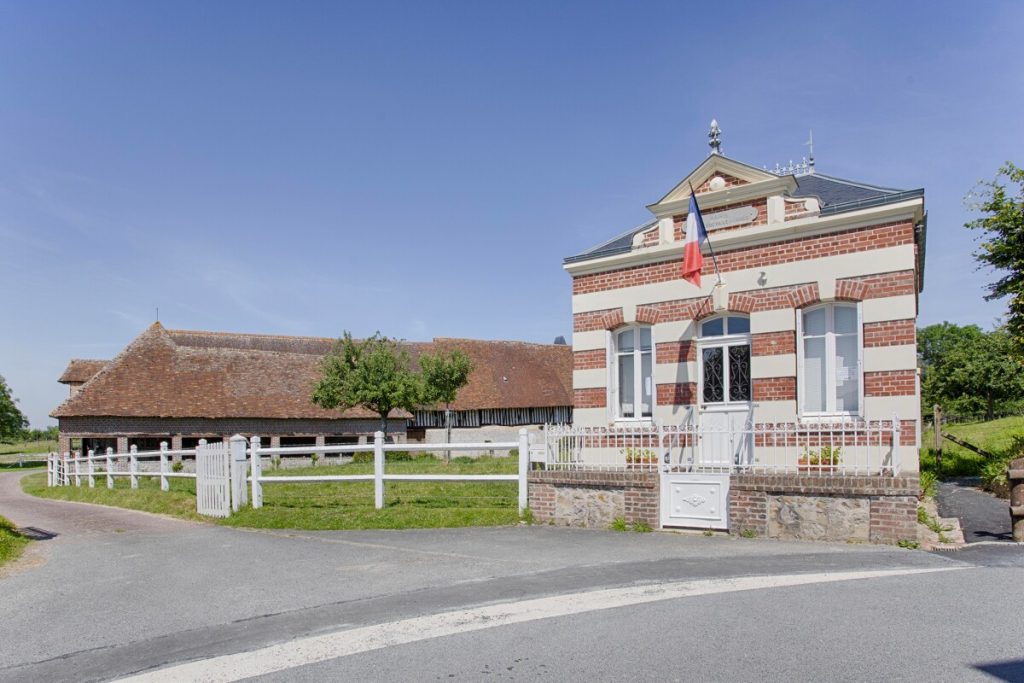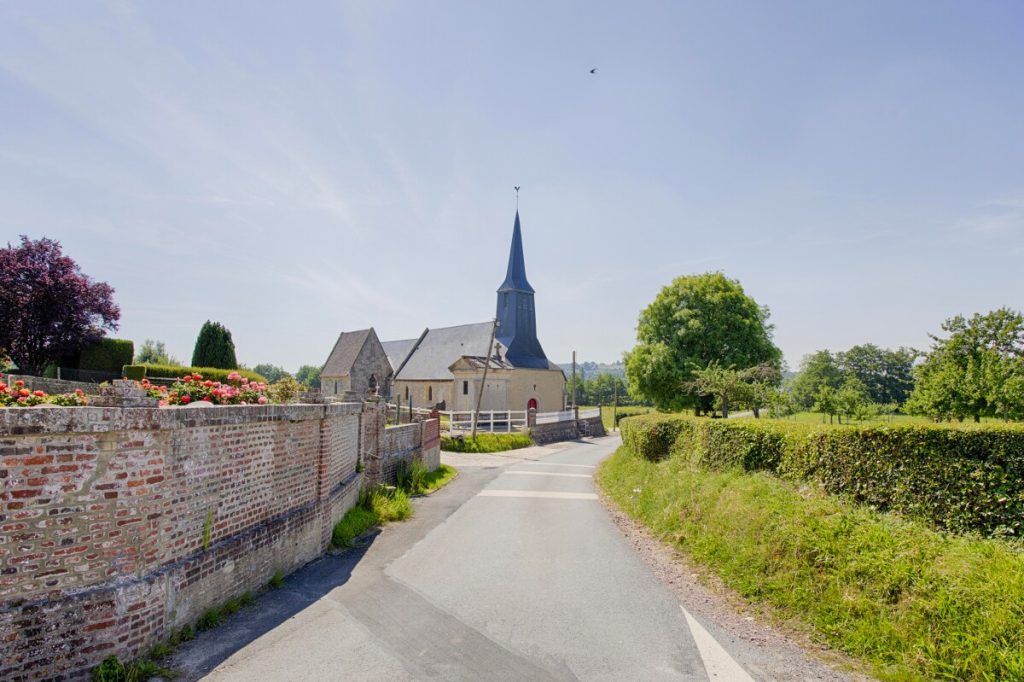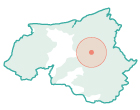Cricqueville-en-Auge is a typical village of the Aubergine countryside, a few minutes from the shops of Dozulé and close to the beaches of Cabourg and Houlgate.

The landscapes of Cricqueville-en-Auge
Crossed by the river Anchor, the town is located at the premises of the marsh of the Dives. From the mound of Bassebourg, you can also see the extent of the wetland and the estuary of the Dives. On a clear day, we guess the plain of Caen and Normandy coastline.
With green groves dotted with apple trees and cows, Cricqueville-en-Auge exudes tranquility. No wonder its wetlands are popular with ranchers and producers.
Producers based in Cricqueville-en-Auge
Au Angoville mansion, the Macrel family operates 15 hectares of apple trees in organic farming. About twenty old varieties are used to produce farmhouse cider, pommeau, calvados, perry, apple juice and cider vinegar in the traditional way. If you are a gourmet, you will have fun tasting local products at the press and filling your basket.
Jean Luc Gaugain, meanwhile, raises his cows in the heart of the marshes. He maintains his land in an exemplary approach to respect for the environment. He uses neither pesticides nor fertilizers and takes full advantage of solar energy, for his dryer for example.
The Loriot court brings together 3 other breeders, specialized in the breeding of purebred Salers cows or crossing Salers/Charolais. Brought together since 2010 by their passion, they offer direct sales of meat and apple juice. Take advantage of an open day to visit them, you will learn more about their profession.
Heritage in Cricqueville
In terms of heritage, Cricqueville-en-Auge is not to be outdone. His église, under the patronage of Saint Germain, dates from the XNUMXthe century. The little town hall is also worth a look, not to mention its mansions including that of 4 nations, built in the XVIIIe century.

The village also has a castle built in 1584. An architectural gem, it is surrounded by a group of old half-timbered agricultural buildings. The building is typical of Renaissance mansions of the Augeron country, built of bricks and stones assembled in a checkerboard pattern. The refined south facade was restored in the XNUMXthe and contrasts with the northern one, which is more decorative with its square towers.
The Lecoeur family, owners of the premises for several generations, open the doors of their home from time to time during the summer and during Heritage Days. They also raise Normandy breed cattle with organic and high environmental value (HVE) qualification by replanting high-stem apple trees for nearly 20 years to give the grasslands an Auger character.





